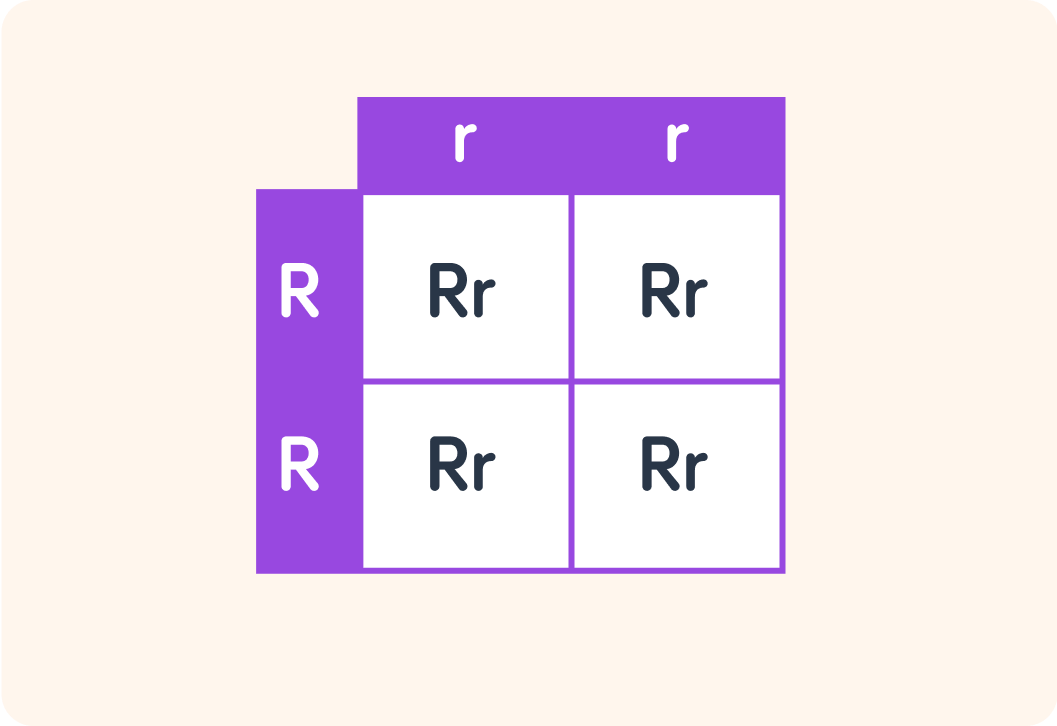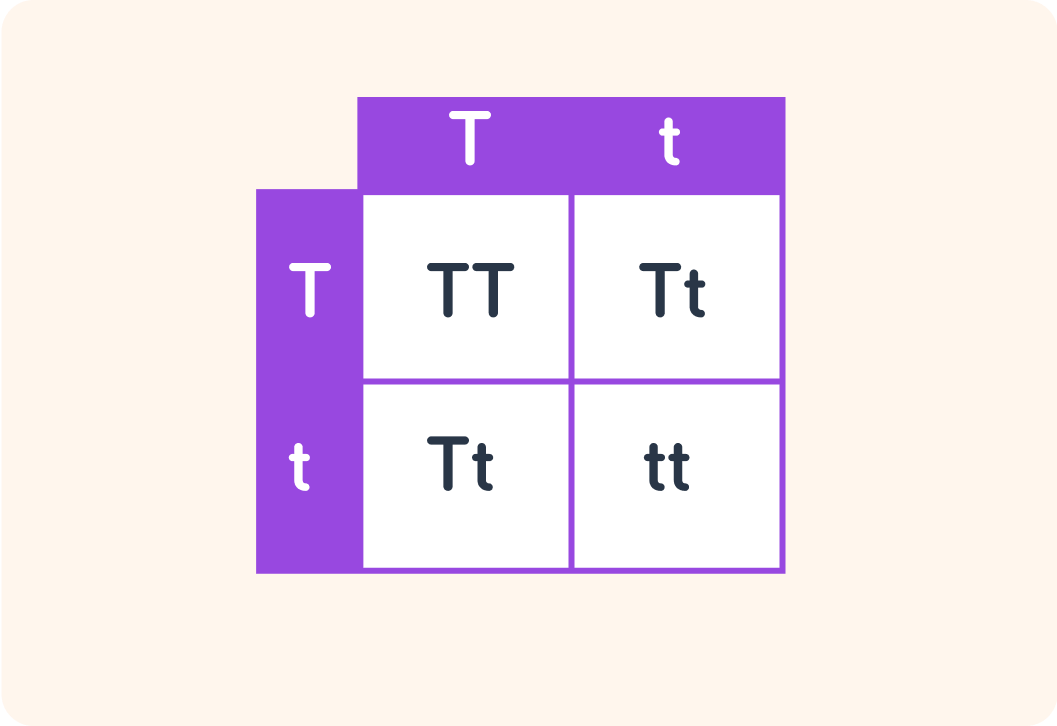YOU ARE LEARNING:
Constructing Punnett Squares

Constructing Punnett Squares
We can make Punnett squares to help us understand a genetic cross. This lesson will walk through the stages of constructing Punnett squares and understanding their outcome.
There are three main ways to display genetic inheritance information:
- Genetic diagrams
- Punnett squares
- Family pedigrees
In this lesson, we'll learn how to construct Punnett squares, and recap how to interpret them.
Here is a completed Punnett square
It shows you a cross between two homozygote parents - one dominant for a trait and one recessive.

We are going to draw a Punnett square to show the cross between two heterozygote parent plants, with the alleles Tt and Tt, where T is for tall plants and t is for short plants.
In how many genotype combinations do you get when you cross the Tt from parent 1 with the Tt from parent 2?

So if we want to cross Tt from parent 1 with Tt from parent 2, we will get 4 offspring genotype combinations in total.
So the first thing we do is to draw a square or hashtag with 4 spaces.

Now we've filled in some letters. Which letters are these?
A) The alleles from the offspring genotypes B) The alleles from the parental genotypes


Are we ready now to add in the offspring genotype combinations? Answer yes or no.


With the parental alleles (Tt and Tt), which genotype combinations can be produced?
A) TT, Tt, Tt, tt B) TT, TT, Tt, tt


So you fill in the offspring genotype combinations by...
taking the parental allele next to the square and the parental allele above the square and combining them.

What's the phenotype ratio of the completed Punnett square for tall plants to short plants from two heterozygote parents?

What's the percent probability of having a heterozygote offspring from two heterozygote parents?

What is the direct proportion of the short phenotype?

